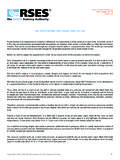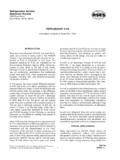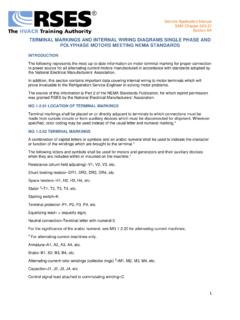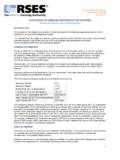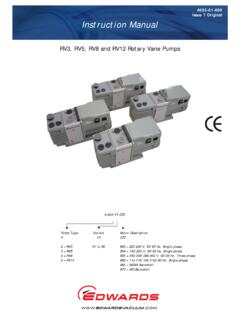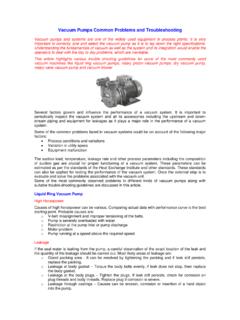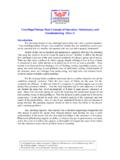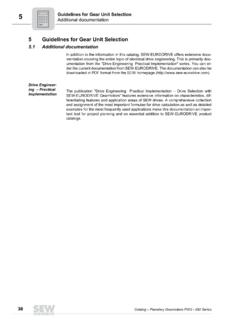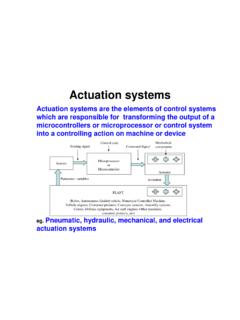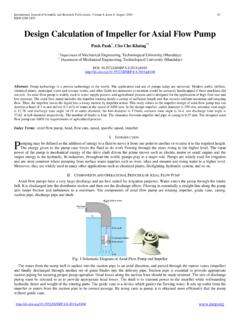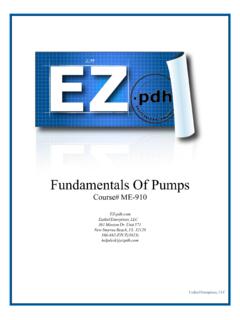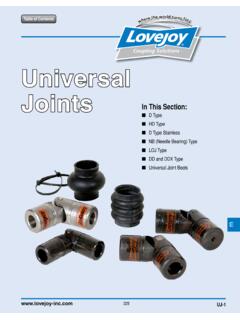Transcription of BEST PRACTICES: Pulling a DEEP VACUUM
1 RSES Journal JULY 2017A ROOM WITH A LEAK Pulling a deep VACUUM A three-part series acquainting technicians with system evacuation best ANDREW ERBACH AND DAVE BOYDI mages courtesy of Appion unless otherwise a vapor compression refrigeration system to operate properly, the only fluids that should be inside the system are refrigerant and oil. This means that service techni-cians must be trained to apply best practices to ensure a proper VACUUM is pulled on any system left open to atmosphere before charging. The purpose of this three-part series is to acquaint the technician with current best practice in system evacuation.
2 In this article we discuss the basics of a clean, tight, dry system and the equipment used in a deep VACUUM . When servicing a refrigeration system, the technician is responsible for ensuring that all work results in a CLEAN, TIGHT, and DRY system. This is especially true of modern refrigerants that require the use of polyolester lubricant, which can be 10 times more hygroscopic than the mineral oils used with chlorinated refrigerants. Non-condensables, primarily air and moisture, can wreak havoc on a refrigeration system by mixing with the oil and creating acids and Keeping the system clean requires only following standard service procedures: purge dry nitrogen when brazing, plan your work so that the system is opened for a minimal amount of time, and replace the liquid line filter dryer any time the system is opened to atmosphere.
3 Tight Proper brazing practices will go a long way toward ensuring the system is tight; even seasoned technicians will have leaks from time to time. All brazing processes should be done while purging dry nitrogen through the tubing. After brazing, HVAC systems should be pressure tested before attempting to pull a VACUUM . If your system can hold a nitrogen pressure charge slightly below the manufacturer s test pressure for 30 minutes, you are ready to pull a VACUUM . Dry Here is where the rubber meets the road remem-ber not to permit air to enter the system after pressure test-ing.
4 Bleed off the nitrogen to atmospheric pressure and im-mediately begin Pulling a VACUUM . The nitrogen will help prevent air and moisture from entering the system. Pull the system down to the required VACUUM specified by the manu-facturer, isolate the system and, if it holds for half an hour, charge with the appropriate evacuating and dehydrating a refrigerant system using a VACUUM pump is one of those fundamental proce-dures which, if improperly done, costs both the customer and the contractor money and time. Since most manufacturers require that systems being repaired be pulled down to at least 500 microns, and in some cases 250 microns, using the right procedures and equipment to get the job done quickly is in everybody s interest.
5 For a system to be dry and clean it must be tight, and that is where proper procedures come Removal ToolsCore removal tools help keep the entire system clean, dry and tight while speeding up the recovery and evacuation pro-cesses. Using tools that have been manufactured for VACUUM BEST 2017 RSES Journal 11 Pulling a deep VACUUM service is recommended. Some manufacturers actually test and rate their tools for a specific micron level. The lower the rating, the better. These tools permit us to remove the core and connect to the system with only the restriction caused by the inside diameter of the service and manifoldIf a technician uses a standard refrigeration manifold for both charging and evacuation, that technician is making a fundamental error.
6 Only VACUUM -rated manifolds and hoses should be used for evacuation and, if you are Pulling VACUUM through the gauge set, that should also be VACUUM -rated. It is surprising to realize how many technicians actually believe that a manifold is necessary for Pulling a deep VACUUM ; this simply is not true. Many technicians have been able to get to 500 microns using a pressure manifold with pressure hoses, but it takes longer than necessary to get the job done, and wasted time is wasted manufacturers test their products down to 20 microns and include VACUUM ratings in their product literature; this information is especially helpful when purchasing service hoses.
7 The better VACUUM hoses will have their VACUUM rating printed on the outside of the hose. Because there are differences in the way hoses are manufactured, VACUUM -rated hoses should be used for evacuation only and pressure-rated hoses for charging only. Using large diameter short hoses speeds up the procedure must look at every seal and connection as a possible VACUUM leak, so reducing the number of connecting points helps minimize potential problems. Standard manifolds, hoses and fittings are designed to work properly when pressurized.
8 The forces on them when in VACUUM are trying to make them collapse, which is the exact opposite of the forces try-ing to expand them like a balloon when under pressure. If you choose to pull through a manifold, all parts of the evacu-ation system should be VACUUM rated: hoses, core removal tools, micron gauges and manifolds. Ideally, the connections to the micron gauge should be located as close to the com-ponent being evacuated as possible. Connections should also be metallic no pressure hoses running to the VACUUM gauge. We want to measure the VACUUM at the unit, not the VACUUM at the hose or at the can enter through a leaky service hose, causing the pull down to take longer.
9 Using metallic connec-tions as close as possible to the service port is a great way to ensure that the leaks you are chasing are from the refrigera-tion circuit and not from the hoses. When working in a tight place, you can fabricate a small stem for your micron gauge out of soft copper with a couple of flair fittings, and locate it where it is easy to see without standing on your head. Once we are past the micron gauge, the use of VACUUM -rated flexible hoses is acceptable. A VACUUM -rated valve core removal tool. A VACUUM -rated A digital micron gauge for Pulling a deep RSES Journal JULY 2017 One great way to accomplish this is to use a core removal tool with your micron gauge attached directly to the side port and the evacuation hose connected to the straight gaugesUsing the compound gauge on your manifold is not an acceptable way to measure VACUUM ; it simply lacks the accuracy needed to measure at the micron level.
10 Using a compound gauge to measure VACUUM is like trying to measure a distance of 1-in. using the odometer on your car. 500 microns is equal to .0196 in. of mercury; the graduations on a Bourdon tube compound gauge are simply unreadable to this level of micron gauges available today don t display the exact level of VACUUM until you are at less than 9,999 microns. The better, and consequently more expensive, gauges start counting down at atmospheric pressure (760,000 microns). While either type of gauge will do the job, using one that starts at atmospheric gives you the ability to see when the VACUUM process stalls, saving time by indicating an oil change is needed or that there may be a leak in the system.
